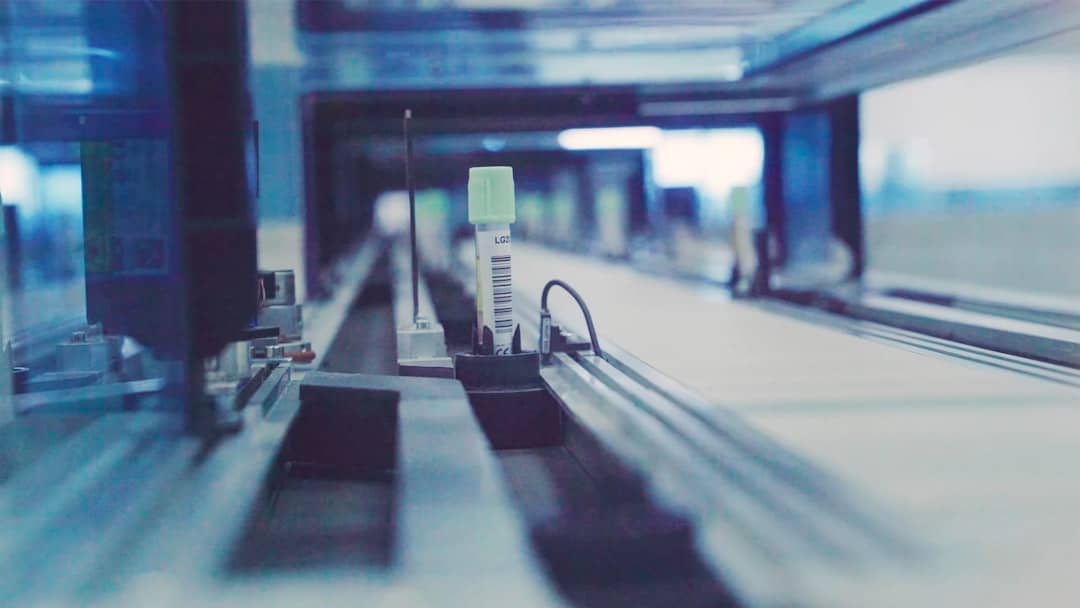Around the world, agriculture faces serious challenges due to climate change. Crop yields and livestock productivity are being impacted by shifting precipitation patterns, rising temperatures, & a rise in the frequency of extreme weather events. Addressing these climate-related agricultural challenges is becoming more and more important as the world’s population grows and so does the demand for food.
Key Takeaways
- Climate change is affecting agriculture through changes in temperature, precipitation patterns, and shifts in pests and diseases.
- These changes are impacting crop yields and livestock production, leading to challenges in global food security.
- Water scarcity and irrigation challenges are also becoming more prevalent, affecting the ability of farmers to sustain their crops and livestock.
- Farmers are implementing adaptation and mitigation strategies to cope with these challenges, but global policy implications are also necessary to address the issue.
- It is crucial for the agricultural sector to work towards sustainable practices and policies to ensure food security in the face of climate change.
Unpredictable weather patterns that include heat waves, floods, droughts, and an increase in pests and illnesses are all faced by farmers. Food security & economic stability are at risk due to these problems, especially in developing countries where agriculture is the main industry and source of employment. Climate change is having a significant impact on agriculture, affecting different farming types & scales in different parts of the world. Climate change is affecting growing seasons, affecting the availability of water, and fostering an environment that is conducive to the spread of diseases and pests. To effectively develop adaptation & mitigation strategies, it is imperative to comprehend the specific effects of climate change on agriculture.
In order to create a more resilient and sustainable global food system that can meet the needs of future generations, we need to address these issues directly. Temperature and Precipitation Trends. The lengthening of growing seasons and crop development are being impacted by rising temperatures. Higher temperatures are causing heat stress in certain areas, which can lower crop yields and quality.
Increased frequency and intensity of droughts and floods are being brought on by changes in precipitation patterns, which can have disastrous effects on crop productivity. Weather patterns that are unpredictable. It is getting harder and harder for farmers to forecast weather patterns & schedule when to plant and harvest. On the other hand, a rise in precipitation is occurring in some areas, which is causing soil erosion & flooding.
| Region | Temperature Change (°C) | Precipitation Change (%) | Yield Change (%) |
|---|---|---|---|
| Africa | +1.5 | -10 | -20 |
| Asia | +2.0 | -5 | -15 |
| Europe | +1.8 | -8 | -18 |
| Americas | +1.7 | -7 | -17 |
This may result in nutrient loss in the soil and make it difficult for farmers to get their fields ready for planting. consequence for crops and farmers. Farmers are finding it challenging to choose which crops to plant and when to plant them due to the unpredictable nature of weather patterns.
They are consequently more vulnerable to crop failure and monetary losses. Getting Used to the New Climate. Farmers must adopt cutting-edge farming techniques and technologies to help them deal with the fluctuations in temperature and precipitation as a result of these changes. Global farmers are very concerned about how crop yields & livestock production will be affected by climate change.
Reduced yields and lower-quality produce can result from direct effects of temperature and precipitation pattern changes on crop growth & development. Droughts, floods, and heat waves are examples of extreme weather events that can seriously harm crops and cost farmers money. Moreover, rising temperatures can have an impact on animal health, feed quality, & heat stress levels, all of which can have an impact on livestock productivity.
Due to the effects of climate change, livestock farmers are dealing with issues like a shortage of water, decreased forage availability, and a rise in disease prevalence. These elements may result in lower livestock productivity and higher livestock death rates. In addition, variations in temperature & precipitation patterns may have an effect on the quantity and caliber of grazing land available to livestock. Consequently, producers must now spend more money on giving their animals additional feed & water, which drives up the cost of production. To lessen the effects of climate change on crop yields and livestock production, farmers must put adaptive measures in place, such as better breeding procedures, better housing options, and effective water management. Pest and disease distribution and behavior are changing as a result of climate change, which poses a serious threat to agricultural productivity.
Increased warmth is fostering an environment that is conducive to pest growth and dispersal into previously unaffected areas. There is an increase in the prevalence of insects that cause damage to crops, including aphids, mites, and beetles. Also, variations in the patterns of precipitation can provide the perfect environment for pathogens that cause disease, like bacteria and fungus.
Some diseases and pest infestations that farmers may not have experienced in the past are becoming problems for them. This may put farmers’ and consumers’ health at danger, as well as raise the need for pesticides and raise production costs. Crop rotation, integrated pest management strategies, & resistant crop varieties are becoming more and more crucial for reducing the negative effects of pests and diseases on agricultural output. Farmers must take proactive steps to safeguard their crops and livestock by staying up to date on the shifting dynamics of pests and diseases in their area. Agriculture is becoming increasingly concerned about water scarcity as climate change affects the distribution and availability of water resources.
In some areas, more frequent droughts are being caused by changes in precipitation patterns, while increased rainfall & flooding are being experienced in other regions. In terms of managing water resources for irrigation, livestock watering, & processing activities, farmers face challenges in both scenarios. Farmers in drought-prone areas are forced to rely more on scarce water supplies, which lowers livestock productivity & crop yields. In contrast, too much rain can cause soil erosion and waterlogging, which makes it challenging for farmers to control irrigation systems.
Moreover, rising temperatures may accelerate evaporation, which would decrease the amount of water available for use in agriculture. In response to water scarcity, farmers are being forced to implement water-efficient irrigation methods like drip irrigation, rainwater harvesting, & soil moisture monitoring. Ensuring farmers have access to dependable water sources for their agricultural operations requires policymakers to allocate funds towards infrastructure related to water storage and distribution. Diversifying Crops to Become Climate Resilient. One strategy is to diversify crop varieties to include species that are more tolerant of heat and more resilient to climate change.
This can lessen the chance that crops will fail as a result of severe weather or pest infestations. Practices for Sustainable Agriculture. Improved soil health, water conservation, and new revenue streams for farmers are all benefits of implementing agroforestry techniques. By enhancing soil fertility & water retention capacity, farms can become more resilient to the effects of climate change.
Examples of improved soil management practices include conservation tillage, cover crops, & organic amendments. Carbon sequestration and renewable energy sources. Purchasing renewable energy equipment, like wind turbines or solar panels, can aid in lowering greenhouse gas emissions from agricultural practices.
Farmers are also looking into ways to sequester carbon through reforestation, rotational grazing, & wetland restoration. The global food security is significantly impacted by how climate change affects agriculture. There is an increasing risk of food shortages and price volatility in the global market as extreme weather events become more frequent and unpredictable. For populations that are already experiencing food insecurity or are dependent on imported food supplies, this could have major repercussions. In order to address the issues posed by climate change in agriculture, policymakers must enact laws that encourage sustainable farming methods, offer financial incentives for implementing climate-smart technologies, and fund extension and research programs that assist farmers in adjusting to changing environmental conditions.
Addressing issues related to climate change and global food security also requires international cooperation. Countries can increase the resilience of their agricultural systems & guarantee a steady supply of food for future generations by cooperating to exchange best practices, resources, & knowledge. As a result of changing temperature and precipitation patterns, affecting crop yields and livestock production, changing the dynamics of pests and diseases, causing problems with water scarcity, & forcing farmers to modify their practices, climate change is, in summary, posing serious challenges to agriculture. Farmers must put adaptive measures in place, like increasing the diversity of their crop varieties, enhancing their soil management techniques, investing in renewable energy sources, and looking into ways to sequester carbon.
Also, in order to help farmers adjust to changing circumstances, policymakers should invest in research & extension services as well as prioritize policies that support sustainable farming practices. Global food security can be ensured in the face of climate change by tackling these issues at the farm level and through policy interventions.
If you are interested in natural language analysis, you may also want to read about the future trends and innovations in the metaverse industry. This article discusses the projections in the metaverse and how it is shaping the way we interact with technology and each other. Check it out here.
FAQs
What is natural language analysis?
Natural language analysis is the process of using computer algorithms to understand and interpret human language. It involves tasks such as text parsing, sentiment analysis, and language generation.
What are the applications of natural language analysis?
Natural language analysis has a wide range of applications, including chatbots, language translation, content categorization, and voice recognition. It is also used in sentiment analysis for social media monitoring and customer feedback analysis.
How does natural language analysis work?
Natural language analysis works by using machine learning algorithms to process and analyze large amounts of text data. These algorithms are trained on linguistic patterns and structures to understand and interpret human language.
What are the challenges of natural language analysis?
Challenges of natural language analysis include dealing with ambiguity, understanding context, and handling variations in language such as slang and regional dialects. It also requires continuous training and updating of algorithms to keep up with evolving language patterns.
What are the benefits of natural language analysis?
The benefits of natural language analysis include improved customer service through chatbots, more accurate language translation, and better understanding of customer feedback and sentiment. It also enables businesses to automate tasks such as content categorization and data extraction from text.











Leave a Reply